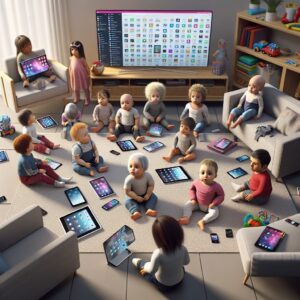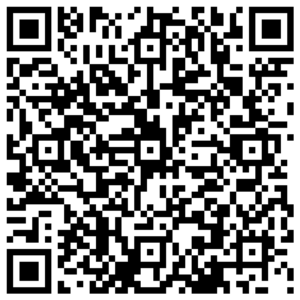
Sharing our reading with you…
We recently shared a variety of recommend reading links around screen time.
In this post we share some more, but this time, the research and articles focus on younger children’s screen time, some including babies.
Special thanks to our National Early Language and Communication Team colleagues for sharing many of the articles and research links with us.
Before you browse through the links below, please consider these questions first.
Q – What does screen time mean to you?
Q – Do you unpick children’s screen time in order to understand how/why the screen is being used?
Q – Do you view screen time as only watching content, or playing games, or do you view any/all kind of screen use as screen time?
Q- Do you know what the different ways we can use screens are? E.g., to consume, create or communicate content?
Q – Do you consider using screens in a practical way to solve real life problems? E.g., using apps such as the camera, calculator, weather forecast, maps, measure and audio recording?
Q- Do you view young children’s (early level and younger) screen time as an opportunity for independent learning or as a means for the adult and child to connect and play and learn together?
Q- What do you think the adult’s role should be when children are using screens?
You might find it helpful to revisit section 4.4 of Realising the Ambition: Being Me (page 49) and also 6.4 (page 70).
Our ability to use language unlocks all areas of learning. Children’s language development thrives through exposure to environments of rich and diverse spoken language experiences. We grow a sense of purpose for the child by our own use of language and engaging them with a wide variety of stories, rhymes, songs, symbols and texts in different media all around them. Building this purpose helps to nurture engagement and encourages children to see themselves as readers and writers. This doesn’t just happen by chance.
Realising the Ambition: Being Me page 70
Q – Do we use language to unlock learning when children are using screens?
Links to research and articles.
Preschoolers’ screen time and reduced opportunities for quality interaction: Associations with language development and parent-child closeness – ScienceDirect Gath, M, McNeill, B, and Gillon, G (2023)
Is the screen time duration affecting children’s language development? – A scoping review – ScienceDirect Bhutani, P et al (2024)
Screen Time and Parent-Child Talk When Children Are Aged 12 to 36 Months | Media and Youth | Brushe.M, Haag.D, Melhuish. E, et all (2024)
Froebel-Trust-Research-Highlight_Tech.pdf Flewitt and Gemayel (2023)
Digital Play (ed.ac.uk) Plowman (2020)
Screen time for babies and toddlers: the evidence | Baby & toddler articles & support | NCT NCT (2019)
Why not all screen time is the same for children – BBC Future Hoggenboom,M (2022)
Babies need humans, not screens | UNICEF Parenting Nelson, C (2023)
Header image generated by Microsoft CoPilot.
Please feel free to share your thoughts via this Microsoft Form



You must be logged in to post a comment.